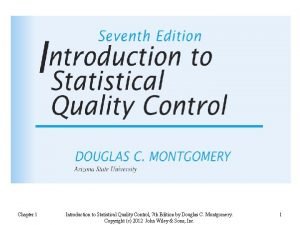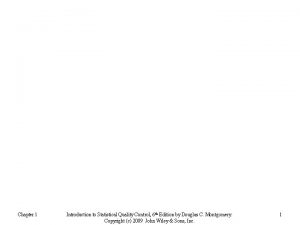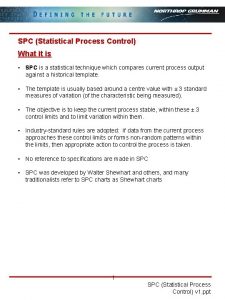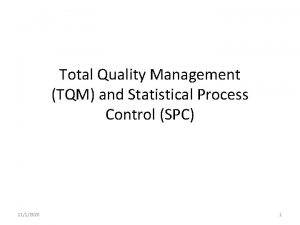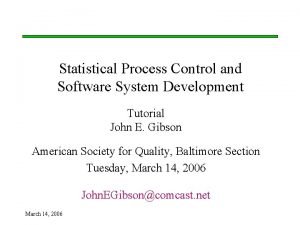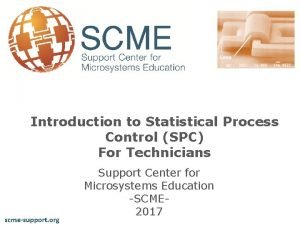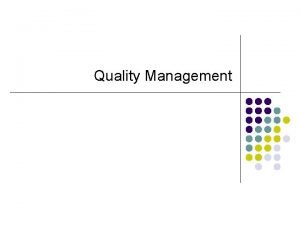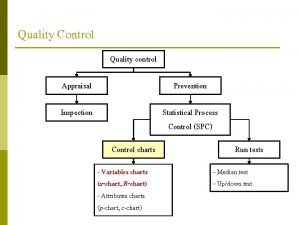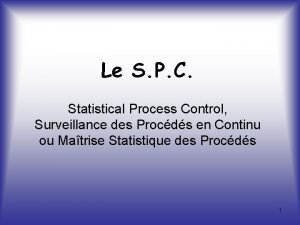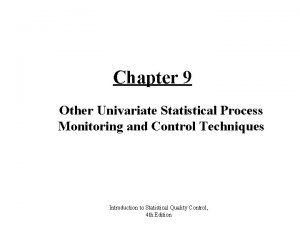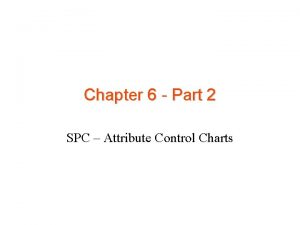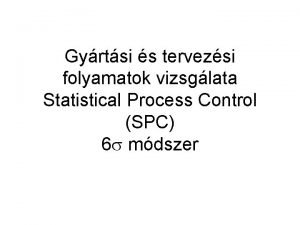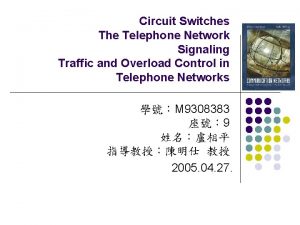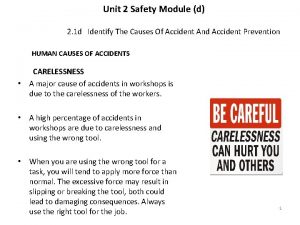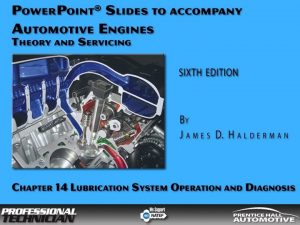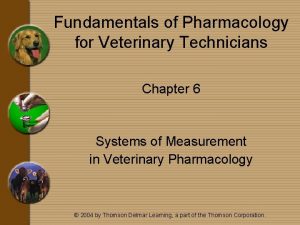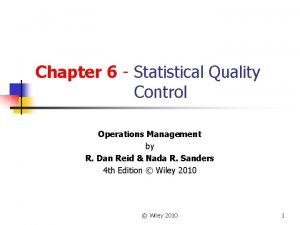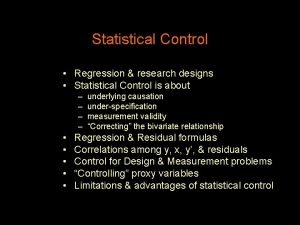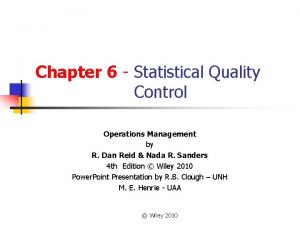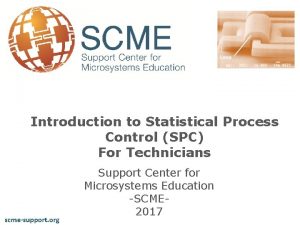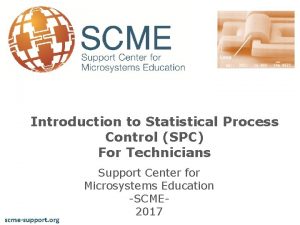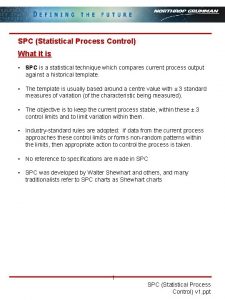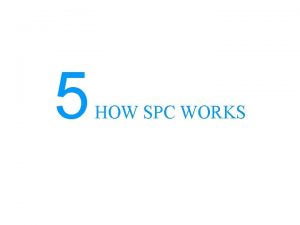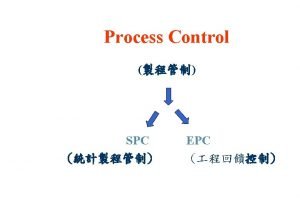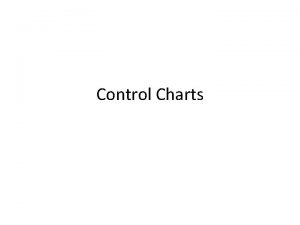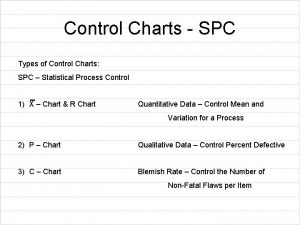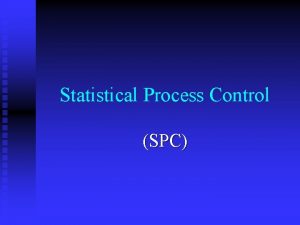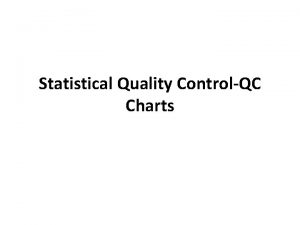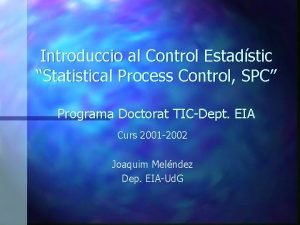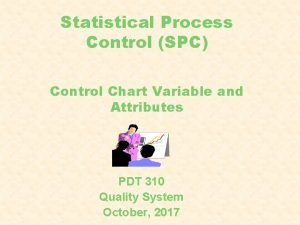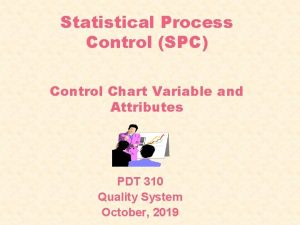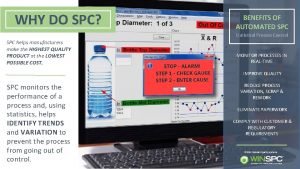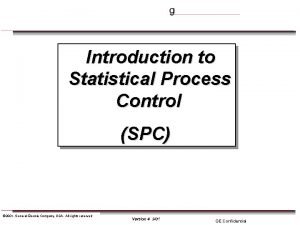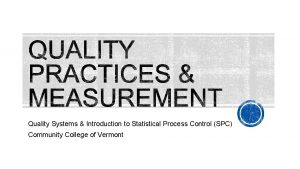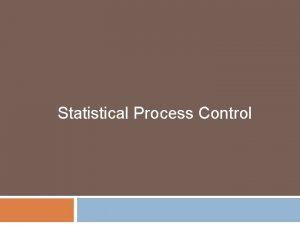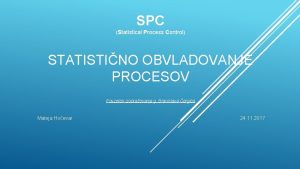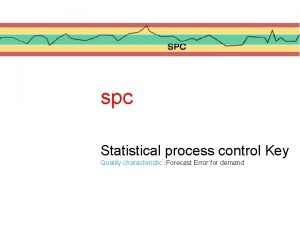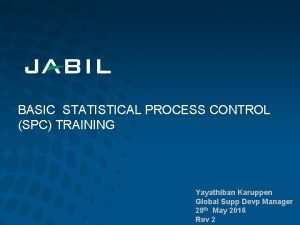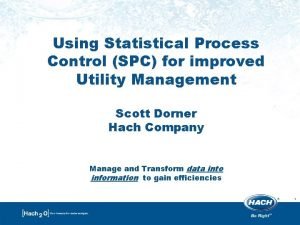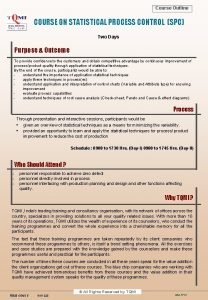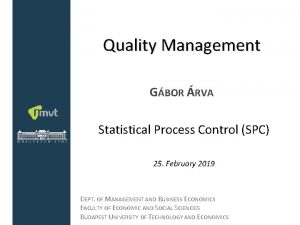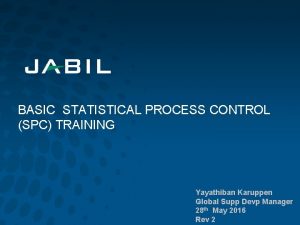Introduction to Statistical Process Control SPC For Technicians















![Variation in Microsystems Hinge System [Image courtesy of Sandia National Laboratories] Variation in Microsystems Hinge System [Image courtesy of Sandia National Laboratories]](https://slidetodoc.com/presentation_image_h/1c25fbcb2f9078a691a99461daa73df9/image-16.jpg)












- Slides: 28

Introduction to Statistical Process Control (SPC) For Technicians scme-support. org Support Center for Microsystems Education -SCME 2017

SCME is a National Science Foundation Advanced Technological Education (ATE) Support Center at the University of New Mexico. We offer professional development and educational materials to excite and engage community college, university, and high school students and faculty in the field of Microsystems (Micro Electro Mechanical Systems, MEMS) technology. Support for this work was provided by the National Science Foundation's Advanced Technological Education (ATE) Program through Grants #DUE 1205138 & 1700678. SEM of Loop and Hinge System Courtesy of Sandia National Laboratories scme-support. org

Objectives • Process variation and the need to identify special cause variation • Statistical Process Control (SPC) • Statistical tools necessary to employ SPC scme-support. org

Why do we need (SPC) Statistical Process Control? Quality Product Biochip slide for testing protein arrays [Image courtesy of Argonne National Laboratories] Drug-eluting Stent by Taxus [Image provided by the FDA]

Statistical Process Control (SPC) SPC is about “control”. Process Variation scme-support. org Target

Inherent or Common Cause Variation

Special Cause Variation Tracking Your Gas Mileage Common cause variation 33 mpg Target MPG 30 mpg 27 mpg Special Cause Variation Time

Special Cause Variability Process Steps: 1. Silicon Nitride Deposition 2. Lithography for chamber 3. Lithography for sensing circuit 4. Metal deposition for circuit 5. Metal Removal 6. Etch reference chamber

Types of data • Variable Data – Data Based upon measurements – Length, time, weight, temperature, pressure, film thickness • Attribute Data – Data based upon counts (discrete) – Eithere or not – Number of defects, acceptable or unacceptable 33 mpg Target MPG 30 mpg 27 mpg Time

Variability Photoresist Thickness Machine#1 Machine#2 1. 1 mm 1. 0 mm 0. 9 mm Time

Variability Photoresist Thickness Day#1 Day#2 1. 1 mm 1. 0 mm 0. 9 mm Time

Variability Photoresist Thickness Day#1 Day#2 1. 1 mm 1. 0 mm 0. 9 mm Time Common Cause Variation Controlled Variation Special Cause Variation Uncontrolled Variation

Another Example Process Temperature Time

Desired Variation Can you think of a product where a certain amount of variation is acceptable?

Desired Variation Can you think of a product where a certain amount of variation is acceptable?
![Variation in Microsystems Hinge System Image courtesy of Sandia National Laboratories Variation in Microsystems Hinge System [Image courtesy of Sandia National Laboratories]](https://slidetodoc.com/presentation_image_h/1c25fbcb2f9078a691a99461daa73df9/image-16.jpg)
Variation in Microsystems Hinge System [Image courtesy of Sandia National Laboratories]

Statistical Process Control and Variation Upper Control Limit Centerline Lower Control Limit

Communication is KEY! Operators Management Communication Engineers Technicians

Statistics for Statistical Process Control • Statistics for Central Tendency – Sample Median – Sample Mean • Statistics for Variability – Sample Range – Sample Variance – Sample Standard Deviation

Sample Median – Central Tendency Sample Median – Represents the data value that is “physically” in the middle of the sample set when arranged in numerical order. Example: – Given the data set: 2, 4, 1, 5, 3 – Order the data: 1, 2, 3, 4, 5 – Question: What is the Median? scme-support. org

Sample Median – Central Tendency Sample Median – Represents the data value that is “physically” in the middle of the sample set when arranged in numerical order. Example: – Given the data set: 2, 4, 1, 5, 3 – Order the data: 1, 2, 3, 4, 5 Example: – Given the data set: 2, 4 , 1, 5, 1 , 3 – Order the data: 1, 1, 2, 3, 4, 5 – Median is the average of the 2 middle #’s: 2 and 3 – Median = 2. 5

Sample Mean – Central Tendency Mean • Universal or Arithmetic Mean = m • Sample Mean = X • Mean of a collection of sample Means = X Calculation of Mean 5 Resist Thickness Values: 2. 87, 2. 99, 3. 01, 3. 15, 2. 98 Microns m = X = 2. 87 + 2. 99+ 3. 01+ 3. 15 + 2. 98 = 3. 00 microns 5 Sample Mean

What is X ? X Wafer #1 Sample Mean X = 3. 48 microns Wafer #2 Sample Mean Wafer #3 Sample Mean X = 3. 32 microns X = 3. 48 + 3. 32 + 2. 72 + 2. 49 = 3. 00 microns 4 X = 2. 72 microns Wafer #4 Sample Mean X = 2. 49 microns

Sample Range Statistics for Variability – Sample Range – Sample Variance – Sample Standard Deviation • Sample Range – The difference between the maximum value minus the minimum value. 2. 87, 2. 99, 3. 01, 3. 15, 2. 98 Question – What is the Sample Range? scme-support. org

Sample Range Statistics for Variability – Sample Range – Sample Variance – Sample Standard Deviation • Sample Range – The difference between the maximum value minus the minimum value. 2. 87, 2. 99, 3. 01, 3. 15, 2. 98 3. 15 – 2. 87 = 0. 28 Sample Range scme-support. org

Sample Variance Statistics for Variability • Sample Variance – How far a set of numbers are spread out. • 5 Resist Thickness Values: 2. 87, 2. 99, 3. 01, 3. 15, 2. 98 microns • Mean = 3. 00 microns • s 2 = 0. 01 Square Microns scme-support. org

Sample Standard Deviation Statistics for Variability • Sample Standard Deviation – Measurement of how the data are distributed around the sample mean and within a range of values. – s 2 = 0. 01 micron 2 – s = 0. 1 micron scme-support. org

Summary • SPC is a statistical scientific method that provides valuable information about a process • This type of variation (common and special cause) should be understood and controlled. • Statistical Concepts used in SPC – – – Sample median Sample mean – m, X, X Sample range - R Sample variance – s 2 Sample standard deviation – s scme-support. org
 Introduction to statistical quality control
Introduction to statistical quality control Introduction to statistical quality control
Introduction to statistical quality control Statistical process control ppt
Statistical process control ppt Grandfather of tqm
Grandfather of tqm Statistical process control tutorial
Statistical process control tutorial Statistical process control
Statistical process control Quality
Quality Inspection chart
Inspection chart Statistical process control definition
Statistical process control definition Statistical process control
Statistical process control P chart control limits
P chart control limits Spc control chart
Spc control chart Spc switching system overload control
Spc switching system overload control D safety
D safety History of pharmacy technicians
History of pharmacy technicians Two technicians are discussing back pressure
Two technicians are discussing back pressure Two technicians are discussing electromagnetic induction
Two technicians are discussing electromagnetic induction An ignition coil operates using the principle of
An ignition coil operates using the principle of Where is connector c250 located?
Where is connector c250 located? Two technicians are discussing schematic symbols
Two technicians are discussing schematic symbols Two technicians are discussing oil changes
Two technicians are discussing oil changes Pharmacology for veterinary technicians
Pharmacology for veterinary technicians Unit 2 communication
Unit 2 communication Two technicians are discussing tire rotation
Two technicians are discussing tire rotation Two technicians are discussing torque wrenches
Two technicians are discussing torque wrenches Two technicians are discussing a stepped ect circuit
Two technicians are discussing a stepped ect circuit Sqc in operations management
Sqc in operations management Statistical control in research
Statistical control in research Statistical quality control in operations management
Statistical quality control in operations management
